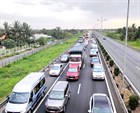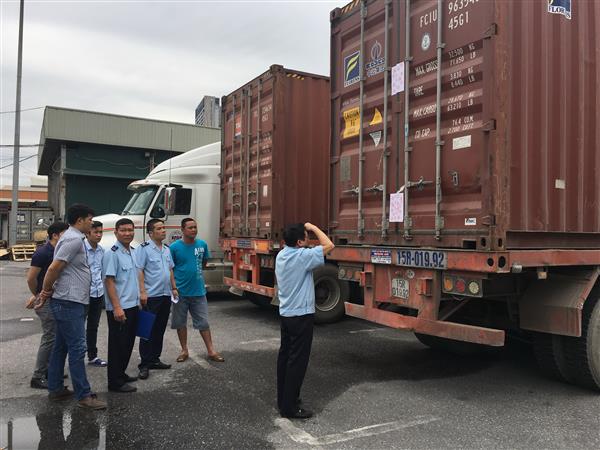Enterprises Need to Quickly Equip Working Conditions for Customs at Warehouses and Locations
Implementation of Circular 84/2017/TT-BTC guiding Decree 68/2016/ND-CP on the conditions for duty-free business, warehouses, locations for customs procedures, consolidation, inspection, and supervision by customs authorities, effective from September 30, 2017, requires enterprises operating warehouses and locations to fully prepare the operational conditions specified by the Customs authorities.
During the period when Circular 84/2017/TT-BTC has not yet taken effect, the General Department of Customs is requiring provincial and city customs departments to remind and urge businesses operating warehouses and locations to proactively and promptly update and equip systems and infrastructure in accordance with the regulations stipulated in Circular 84/2017/TT-BTC.
Businesses need to equip conditions related to the workplace of the Customs authority; the place for inspecting goods to ensure the capability to perform inspection and supervision tasks of goods at the warehouse; a storage area for seized items in violation; management software ensuring connectivity with the customs managing the warehouse and the centralized data processing system of the Customs authority; image storage systems, data retrieval per the request of the Customs authority.
According to the regulations outlined in Circular 84/2017/TT-BTC, the workplace of the Customs authority at warehouses and locations is organized and constructed by organizations or individuals operating warehouses and locations and must meet conditions such as: Being within the area of the warehouse or site to be newly recognized or already recognized or within the same land plot under the right to use by the business, facilitating customs inspection and supervision tasks.
A minimum area of 20 m², separated from the surrounding areas, ensuring the inspection and supervision work of the Customs authority.
For centralized gathering, inspection, and supervision locations for goods at sea ports, international airports, international border gates, the Customs working office must have a minimum area of 50 m².
Necessary equipment includes: Computers installed with management software, connected to the management system of the businesses operating warehouses and sites, and integrated with the Customs Authority’s Electronic Data Processing System as mandated by the General Department of Customs.
Equipment for connection to the surveillance camera system of the organization or individual operating warehouses and locations to monitor, store, retrieve, and display images at all areas containing exported and imported goods, warehouse entry and exit gates, locations, etc.
The goods inspection place must have a roof and be within the area of the warehouse or location, facilitating the Customs authority in performing actual goods inspection, customs sealing.
For warehouses and locations with a total area of 3 hectares or more, organizations or individuals must arrange an area for the container scanner operation with a minimum area of 2,000 m² to ensure radiation safety and scanning operations. While waiting for the container scanner to be deployed to the operational area, the business can still use the above area for warehouse or location business exploitation activities.
Regarding the storage area for seized items in violation, the Circular requires a minimum area of 30 m², separated from other goods storage. For centralized inspection and supervision locations for postal items and express delivery items, the storage area for violating goods must have a minimum area of 10 m²…
Source: Customs Newspaper
- Ministry of Health of Vietnam issues Inspection Plan for 2025
- Vietnam: Classification of motor vehicles by purpose of use from January 1, 2025
- Assignment of duties of police officers commanding, directing traffic on road traffic routes in Vietnam in 2025
- Proactively strengthen the prevention and control of Diphtheria in Vietnam according to Official Dispatch 1285
- Continue to strengthen state management of e-commerce in Vietnam
- Information about patients in the medical examination and treatment management information system in Vietnam from January 1, 2027
-

- Notable documents of Vietnam in the previous week ...
- 17:22, 26/11/2024
-

- Ministry of Health of Vietnam issues Inspection ...
- 15:34, 26/11/2024
-

- Steps for data cleansing to issue organizational ...
- 15:23, 26/11/2024
-

- Vietnam: Classification of motor vehicles by purpose ...
- 14:59, 26/11/2024
-

- Assignment of duties of police officers commanding ...
- 14:30, 26/11/2024
 Article table of contents
Article table of contents

